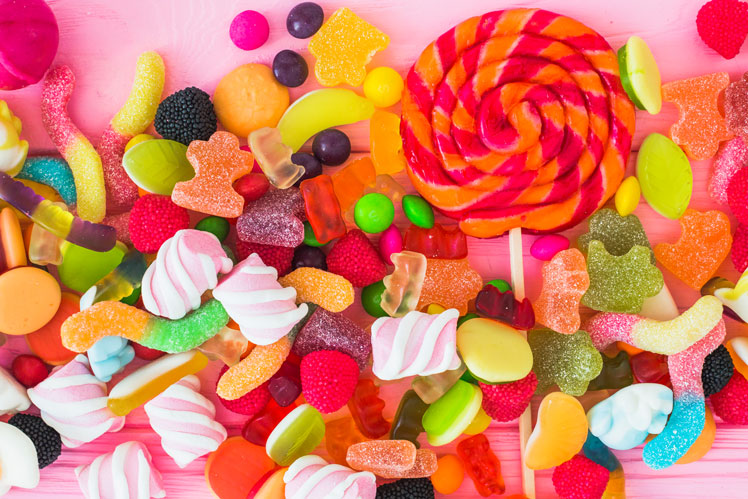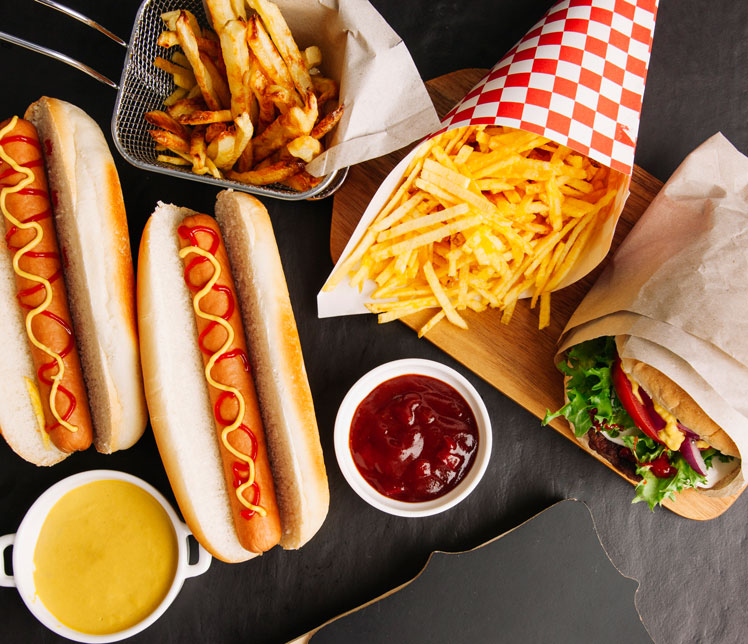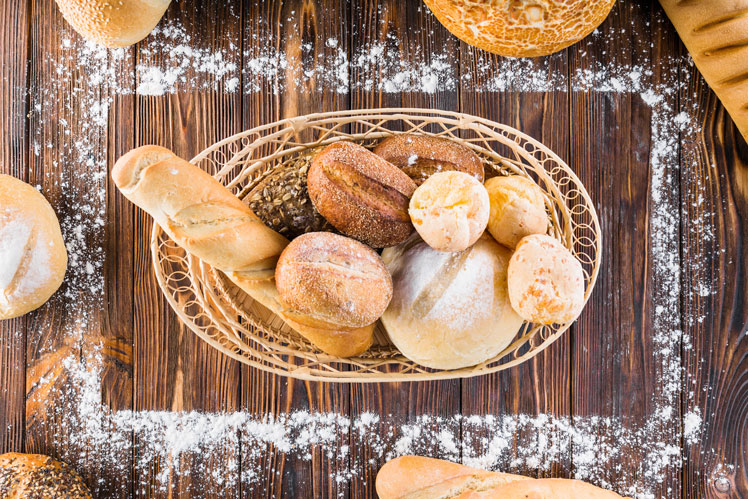It's no secret that modern man eats differently from his ancestors. Over the past 100 years, completely new products have become widely available, resulting from the application of the latest technologies in food production. The way food ingredients are stored and transported has changed significantly, and people around the world have been able to regularly consume foods that their grandparents did not even know about.
However, along with positive changes, the industrial production of food has brought a number of negative aspects into our lives. In an effort to improve consumer qualities (appearance, taste, shelf life, etc.), manufacturers began to include special substances in food products, most of which are not as harmless as they seem. We bring to the attention of readers the top 10 most harmful food additives that are found in common food and cosmetic products.

1. Synthetic sweeteners
Artificial sugar substitutes improve the taste of food and reduce its cost. Two of them are especially dangerous: aspartame and acesulfame potassium. The first has a proven carcinogenic effect, with prolonged use causes skin lesions and destruction of tooth enamel. In addition, aspartame contains phenylalanine, a substance that has a negative effect on the psyche. Its accumulation in the body is fraught with the development of panic attacks and depressive states. The use of acesulfame potassium leads to kidney pathologies, including malignant neoplasms. In food formulations, aspartame appears under the designation E951, and acesulfame potassium – E950 (also Sunett). Both substances are widely used in the manufacture of sugary drinks, confectionery, bread and pastries. Some drug manufacturers add the E950 sweetener to the glaze that covers the tablets.
2. Corn syrup
By itself, corn syrup is neither synthetic nor especially harmful, but during the manufacturing process it goes through a stage of enrichment with enzymes and additional fructose. The result is an additive that is many times more saturated with harmful components than regular sugar. Virtually all sugary sodas, drinks, and children's treats (gummies, hard candies, etc.) contain corn syrup as one of their main ingredients. With the frequent use of these products, the body receives such a load that it cannot cope with. The level of sugar in the blood increases exorbitantly. Long-term use of corn syrup is fraught with the development of type 2 diabetes, obesity and food addiction.

3. Trans fat
These substances do not make food healthier and tastier, but significantly reduce the cost of its production. They replace natural animal and vegetable fats, which undoubtedly plays into the hands of unscrupulous manufacturers. The use of trans fats in food contributes to negative changes in the composition of the blood, the accumulation of “bad” cholesterol in it. This increases the risk of developing cardiovascular pathologies, obesity, metabolic disorders (diabetes in particular), and reproductive problems, especially in men.
Most civilized countries have adopted laws requiring consumers to be warned that products contain trans fats, but manufacturers do not always follow them.
4. Artificial dyes
Natural dyes are isolated from vegetable raw materials. They are harmless, but not always resistant to heat. In addition, vegetable dyes can rarely give the product a very bright color.
The more intense the color of the food you buy, the more likely it is to contain synthetic dyes. They are added to confectionery, sausages, cheeses, fish delicacies, drinks and many other finished products, and are also used in the manufacture of perfumes and cosmetics.
All food colorings can cause allergic reactions and indigestion. Some of these substances affect the central nervous system, which is very dangerous for children – big fans of bright candies, marmalades and other attractive sweets. In babies, artificial dyes cause increased excitability, impaired ability to concentrate and, as a result, problems with intellectual development.
5. Sodium sulfate
Preservative and emulsifier (E514), widely used by manufacturers of shampoos, conditioners and hair balms. It provokes the occurrence of allergic reactions (especially skin rashes), severe headaches and difficulty breathing.
6. Monosodium glutamate
That is a flavor enhancer. On product packaging, it is designated as E621 or MSG. When accumulated in the body, it can cause erosive damage to the digestive organs. However, the main danger of using monosodium glutamate lies elsewhere: for people who constantly eat food containing this substance, any other food seems insipid and tasteless. Thus, glutamate is addictive to certain types of foods, as a rule, far from being the most beneficial for health. At risk are children and adolescents who are not yet able to assess the consequences of their actions and are not inclined to control their eating behavior.
The E621 additive is actively included in the composition of fast food, a variety of chips, crackers and snacks, canned food, sausages, smoked meat and fish, that is, products that you can afford to eat only occasionally and in small quantities. Producers encourage immoderate consumption of such food, not caring about the health of buyers.

7. Sodium nitrite
Preservative (E250), which is added to food (sausages, meat and fish gastronomy) to fix color and protect against oxidation. Toxic. Life-threatening poisoning causes a dose of 2 to 6 g.
Once in the body, sodium nitrite enters into chemical reactions, the products of which are strong carcinogens. The additive itself can provoke the development of pathologies of the intestines and liver, as well as the appearance of allergic reactions.
8. Sulfur dioxide
Gaseous preservative (E220, sulfur dioxide, Sulfur Dioxide). It is used for fumigation of fresh vegetables and fruits in order to ensure their long-term preservation. It is used in winemaking to stop the fermentation of wine, in the production of juices and dried fruits.
Sulfur dioxide is toxic. Poisoning is manifested by hoarseness, coughing, difficulty swallowing, vomiting and suffocation. There is a possibility of pulmonary edema. In asthmatic patients, the supplement can trigger life-threatening attacks. After drinking wine treated with sulfur dioxide, some people experience headaches, diarrhea, and nausea.
Fresh fruit, after fumigation with sulfur dioxide, quickly loses B vitamins.
9. Potassium Bromate
Baking powder, improver of consumer qualities of flour and bakery products. It has been experimentally established that potassium bromate (E924a) is a substance that provokes the development of malignant tumors. In addition, the additive is toxic: its entry into the human body threatens to malfunction the kidneys.
Potassium bromate is officially banned in Canada, EU countries, Russia, some states of South and Central America, Asia and Africa. In the US, it is still used in the food and cosmetics industries.

10. Synthetic antioxidants (BHA and BHT)
They are used in the manufacture of lipstick as antioxidants and preservatives. When ingested, they can provoke allergic reactions, adversely affect the nervous system. There is evidence that these substances have carcinogenic activity.
The law requires manufacturers to put detailed lists of the ingredients used in the manufacture of food on packaging. Thus, the well-being of the consumer depends entirely on his attention and vigilance. It is necessary to carefully study the composition of products before purchasing them and to have information about how various food additives affect the human body. This is the only way to maintain health and avoid many troubles.
Source: neboleem.net
We also recommend:
◆4 types of substances that reduce the body's defenses
◆4 most harmful types of sweets and options for replacing them










